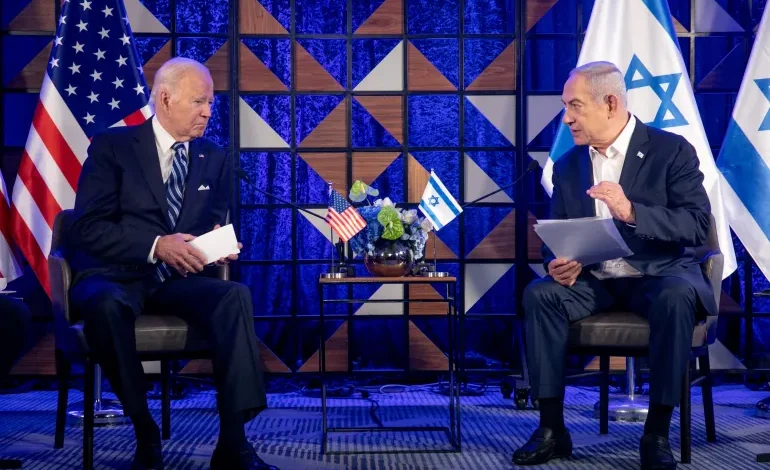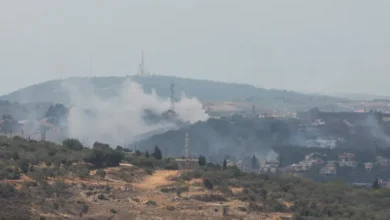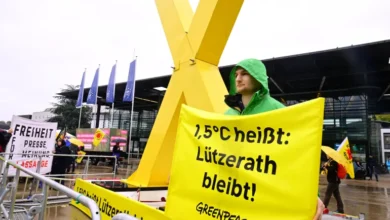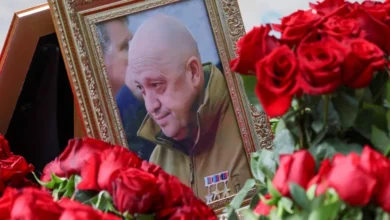Why is Biden engaging in disinformation on Gaza?
Ahmed Moor

When my wife was pregnant with our first child, she gave me a book about prenatal development. I learned that a baby’s lungs are among the last organs to develop – that’s why so many premature infants need to be intubated.
This fact came back to me as I watched the Israeli terror unfold in al-Shifa Hospital, eight weeks ago now. I became fixated on the 39 premature babies there, the ones who were evacuated from the neonatal intensive care unit into two beds, wrapped with foil. I pictured them gasping for breath, slowly dying.
Then came the news that five nameless infants were discovered decomposing in Al Nassr Pediatric Hospital, abandoned after the Israeli army forced the medical staff and patients to flee. I pictured how they died alone, cold and in terror.
I cannot doubt that senior officials in the Biden administration have seen the images and videos. I have to believe that many of them are horrified by what they have seen. And I also believe that their awareness of the horror, and their awareness of their active participation in producing it, is, in part, what leads them to fabricate intelligence estimates and tell outright lies.
But there is something else at work in the Biden administration’s effort to disseminate fake Israeli news: disinformation has been a potent weapon in war and in the commission of genocide. And it has been used frequently, perhaps to diminishing effect in the modern media age.
The US government is not very credible when it comes to intelligence. Recall Secretary of State Colin Powell’s cheap performance at the United Nations in 2003, when he accused Iraq of possessing weapons of mass destruction and presented a prop vial containing white powder as evidence.
But in matters of war, a crummy presentation and half-hearted delivery is sometimes good enough. Powell’s antics didn’t fool anyone, but his presentation was enough to distract from the impending catastrophe.
We learned over time what we knew all along: there were no weapons of mass destruction in Iraq. Saddam Hussein had nothing to do with the terrorist attacks of September 11, 2001. And the only uranium yellowcake to speak of was baked up by British and American spies.
But the lies about Iraq were nothing new; Powell’s effort was one memorable example out of a series of disinformation acts designed by the US government to shape public perceptions.
Perhaps the most infamous instance occurred in 1964, in the Gulf of Tonkin, off the coast of Vietnam. Back then the US fabricated a story about a firefight with North Vietnamese forces there. The goal was to push an escalation of that war domestically. It worked, and millions of Vietnamese civilians were killed in a conflict without a purpose.
Today, President Joe Biden and his advisers are plainly lying to us. They claimed to have seen independent intelligence indicating the presence of a Hamas military installation underneath al-Shifa Hospital in Gaza. Biden, speaking with reporters, has said, “The first war crime is being committed by Hamas by having their headquarters, their military, under a hospital. That’s a fact. That’s what’s happened.” Only, of course, it didn’t.
Many did not believe the president, but again, that’s beside the point. Misinformation serves a useful purpose from the point of view of the people who practise it.
Propaganda muddies perceptions of what is happening. Our media feel compelled to cover breaking news as it happens and government officials are regarded as speaking authoritatively when they do. Deference to the office of the presidency is deeply rooted, and by definition the president’s words are newsworthy.
That deference, combined with the president’s prominence as a source of news, means that presidential lies aren’t confronted directly even as they are broadcast widely. If the untruths are subsequently challenged, the challenges are not treated as newsworthy.
By sowing confusion and misinformation, the president diminishes the potency of an electorate’s understanding of and forceful opposition to violence. In that way, disinformation is used to untether policymaking from the ordinary accountability mechanisms of democracy.
But there are early signs that disinformation doesn’t operate in the way it used to. Today, the speed of the news cycle is such that the first lie has barely been uttered before the next lie has been debunked. Al-Shifa was on our minds, even as Israeli leaders attempted to lay the groundwork for further atrocities in Khan Younis and Rafah, in the southern Gaza Strip. Now, they have destroyed nearly all of Gaza’s 36 hospitals, and Al-Shifa and Al Nassr Pediatric Hospital continue to be on our minds.
And now, as the world turns to South Africa’s credible charge of genocide targeting Israel, the White House has chosen to release new “intelligence” doubling down on their original falsehood at al-Shifa. To what purpose isn’t clear, but the timing suggests the tired playbook is still at work.










